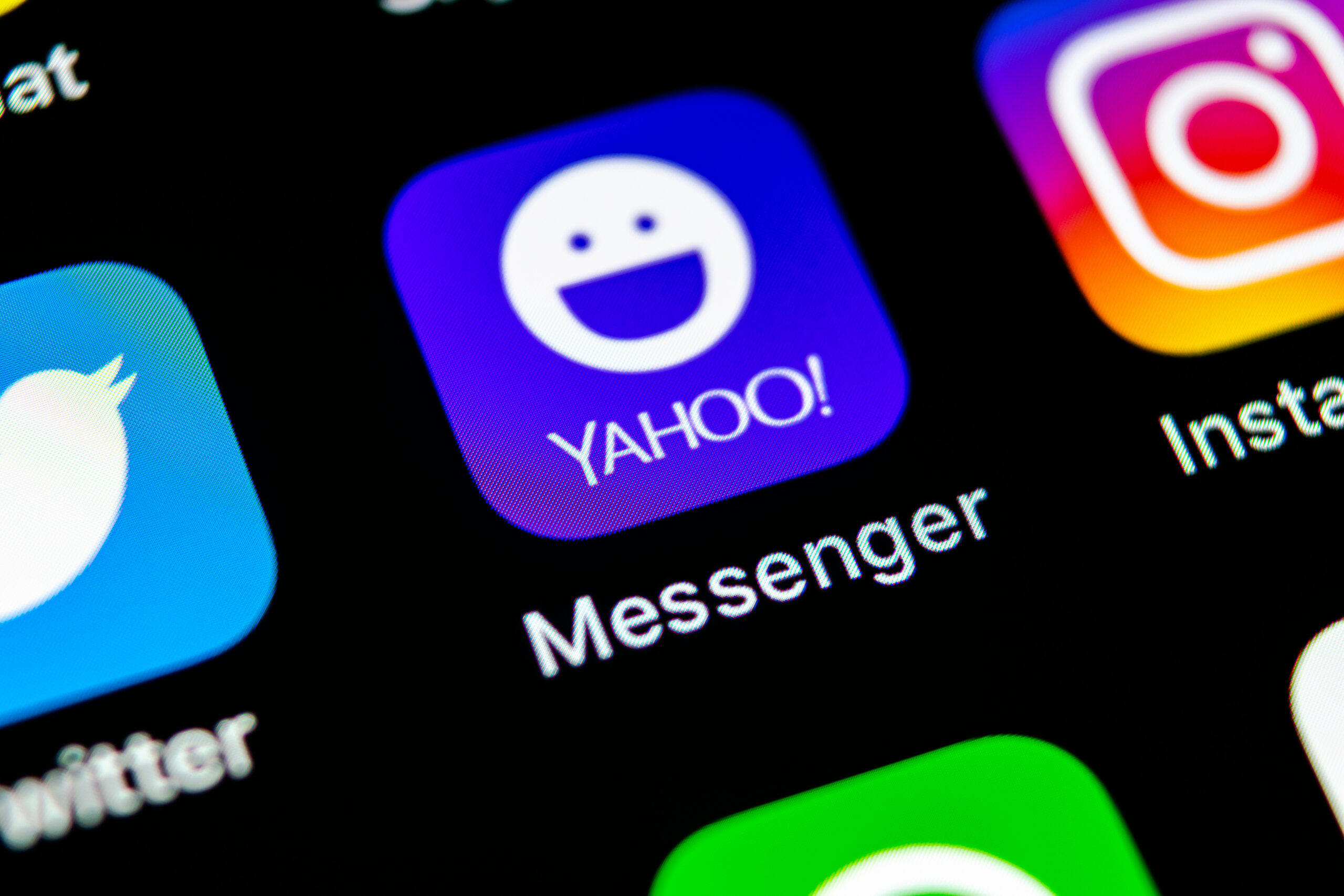Over the years, we’ve seen countless apps that promised to revolutionize the way we communicate, create, or interact with technology. Some captured the public’s attention and became household names, while others fizzled out almost as quickly as they arrived. Despite offering innovative features or unique concepts, these apps couldn’t sustain momentum for a variety of reasons—whether it was poor execution, fierce competition, or a shifting market. In this article, we take a look at 13 apps that once held great promise but ultimately faded into obscurity.
Google Glass

Google Glass seemed like a futuristic gadget that would change the way we interact with technology. Launched in 2013, it was a pair of augmented reality glasses designed to display useful information directly in the user’s line of sight. However, it failed to gain traction due to privacy concerns, limited functionality, and high price. The wearable tech faced backlash from both the public and regulators, with people worried about constant surveillance. Additionally, the user base was niche, and the software development never quite met expectations. Google eventually discontinued the product in 2015, after a brief trial period with developers. Though its underlying technology has influenced other industries, Google Glass remains a cautionary tale of overhyped innovation.
Vine

Vine was a short-form video platform that allowed users to create 6-second looping videos, which exploded in popularity after its 2013 launch. The app was lauded for its simplicity and creative potential, with users showcasing quick, funny, or artistic clips that often went viral. Despite this success, Vine struggled to monetize effectively and faced stiff competition from larger social media platforms like Instagram and YouTube. Twitter, which acquired Vine in 2012, decided to shut it down in 2016, citing lackluster revenue potential and dwindling user engagement. Many content creators moved to Instagram and YouTube, where they could produce longer videos and better capitalize on their audiences. Vine’s demise marked the end of an era of super-short social media, but it left a lasting impact on viral content. Its most memorable videos live on, even as the platform itself fades into digital history.
Foursquare

Foursquare was one of the first location-based social networks, allowing users to “check-in” to places and share recommendations with friends. Launched in 2009, it was hailed as a revolutionary app that would redefine how people discover local businesses. However, the novelty wore off quickly, and user engagement stagnated, especially after the rise of Instagram and other social platforms with more dynamic features. Foursquare’s attempt to rebrand itself as a recommendation engine (Swarm) failed to capture users’ attention, and its check-in features were overshadowed by the rise of Snapchat and Facebook. While it pivoted to enterprise services in 2014, the original consumer-facing app fizzled out. Foursquare’s place in history remains as an early innovator that failed to sustain momentum in a rapidly evolving digital landscape. It now serves as a cautionary example of an app that couldn’t adapt quickly enough to changing user behavior.
Meerkat

Meerkat was a live-streaming app that gained traction in 2015 for its simplicity and real-time broadcasting capabilities. It allowed users to stream live video directly from their phones, making it one of the first mainstream apps to capitalize on the growing trend of live video. Despite initial hype, Meerkat’s downfall came quickly when Twitter launched Periscope, a similar live-streaming service with more robust features. Meerkat tried to pivot by focusing on social networking aspects but was unable to maintain its early momentum. By 2016, the app was shut down, and its key team members moved on to other projects. Periscope, while more successful, eventually faded out as well, as live streaming became a feature integrated into platforms like Instagram and Facebook. Meerkat’s brief run exemplified the challenges of trying to build a niche app in a competitive, fast-changing market. Its impact, though short-lived, contributed to the rise of live-streaming as a mainstream feature.
Microsoft’s Windows Phone

Although not an app in the traditional sense, Windows Phone was a revolutionary product that boasted a unique interface and seamless integration with Windows OS. Microsoft launched it in 2010 with hopes of taking on iOS and Android. It featured a clean, tile-based design that was ahead of its time and offered users a unique experience. However, Windows Phone never gained significant market share, as developers focused on iOS and Android apps, leaving the platform with a limited selection of third-party apps. By 2017, Microsoft had abandoned its mobile platform, with CEO Satya Nadella announcing the company’s exit from the smartphone market. Despite initial excitement, the app ecosystem and lack of support led to its eventual decline. Windows Phone remains a stark example of how even innovative technology can falter without widespread developer support.
Google+

Google+ launched in 2011 with grand ambitions of becoming the next social media platform, offering features that mixed Facebook and Twitter. Google heavily promoted the platform, and for a while, it seemed poised to challenge the dominance of Facebook. However, Google+ struggled with user engagement and adoption, partly due to its confusing interface and the awkward integration with other Google services. Despite attempts to improve features like Hangouts and Communities, Google+ was never able to build a strong user base. Privacy issues, including data breaches, compounded the platform’s struggles. In 2018, Google announced it would shut down Google+ for consumers after years of underwhelming performance. The app’s failure remains one of Google’s most notable misfires, highlighting the difficulty of entering the saturated social media space.
Blackberry Messenger (BBM)

Blackberry Messenger (BBM) was once the hallmark of messaging apps, providing secure, instant messaging for Blackberry device users. Released in 2005, it was one of the first apps to offer free, real-time communication across devices. BBM’s popularity soared in the early 2000s, becoming an essential app for business professionals and teenagers alike. However, as smartphones evolved and Blackberry’s market share waned, the app struggled to compete with the likes of WhatsApp and iMessage. In 2016, BBM was made available to Android and iOS users, but by then, it was too late to recapture its former glory. Despite nostalgic appeal among early adopters, BBM ultimately failed to keep pace with more versatile messaging platforms. In 2019, Blackberry officially announced the end of BBM, marking the end of an era for the once-dominant app.
Path

Path was a social networking app launched in 2010 that emphasized sharing moments with a small, intimate group of friends. Its design focused on privacy, with users allowed to share content only with a limited number of connections, a stark contrast to Facebook’s open sharing model. Path initially attracted a devoted user base, especially among early adopters seeking a more personal social experience. However, the app struggled to differentiate itself and failed to scale beyond its niche market. Despite updates and new features, Path couldn’t compete with the dominance of Facebook and Instagram. By 2015, after numerous attempts to redefine itself, Path was acquired by Kakao and shut down in 2018. Though it had a loyal following, Path’s failure to attract a broader audience led to its eventual demise.
Google Reader

Google Reader was a news aggregator app that allowed users to subscribe to RSS feeds and read their favorite blogs and websites in one place. Launched in 2005, it quickly became a go-to tool for news junkies and bloggers. Google Reader was ahead of its time, offering a streamlined way to consume digital content. However, as social media platforms like Twitter and Facebook took over the role of news dissemination, Reader’s user base started to dwindle. In 2013, Google decided to discontinue the service, citing a decline in users and engagement. The shutdown sparked outrage among loyal users, many of whom lamented the loss of one of the internet’s most efficient tools. While it was an early example of content aggregation, Google Reader couldn’t evolve with the changing digital landscape, leading to its eventual obsolescence.
AOL Instant Messenger (AIM)

AOL Instant Messenger (AIM) was one of the original instant messaging platforms, launching in 1997. It quickly became the go-to tool for online chatting, connecting millions of users in the late 90s and early 2000s. AIM was revolutionary, offering users the ability to communicate instantly through text, as well as send files and links. However, as social media platforms gained prominence and texting became the norm on mobile phones, AIM’s user base declined. By the time it was shut down in 2017, it had been overshadowed by apps like Facebook Messenger, WhatsApp, and Snapchat. AIM’s end marked the closing of a chapter in digital communication, as it was replaced by more feature-rich and mobile-friendly alternatives. Although nostalgic for some, AIM couldn’t keep up with the rapidly changing world of digital communication.
Yahoo Messenger

Yahoo Messenger, one of the earliest instant messaging apps, was launched in 1998 and became an essential part of online communication during the early days of the internet. It allowed users to send instant messages, share photos, and even make voice and video calls. At its peak, Yahoo Messenger had millions of active users, with its emoticons and status messages becoming part of the online culture. However, as other messaging platforms like Facebook Messenger, WhatsApp, and Skype grew in popularity, Yahoo Messenger’s user base dwindled. Yahoo’s inability to innovate and adapt to changing trends in communication led to its decline. After several failed attempts to revitalize the service, Yahoo announced in 2018 that it would shut down Messenger entirely. Yahoo Messenger’s demise marked the end of an era for internet communication, but it remains fondly remembered by many early internet users.
Bebo

Bebo, once a popular social networking site, was launched in 2005 and quickly gained millions of users, particularly in the UK and US. It allowed people to create personal profiles, connect with friends, and share multimedia content. For a brief period, Bebo rivaled MySpace and Facebook, offering a similar user experience with a focus on profiles and social interaction. However, Bebo failed to adapt to the changing dynamics of social media, and as Facebook grew more dominant, Bebo’s user engagement began to drop. In 2008, Bebo was acquired by AOL, but it never regained its former popularity. After several attempts to relaunch the platform in various forms, it was eventually sold to a private equity firm in 2013 and rebranded as a messaging service. Bebo’s rapid rise and fall serve as a cautionary tale for social networks that fail to evolve with user expectations.
Qik

Qik, a mobile video streaming app, was one of the first to allow users to broadcast live video from their smartphones. Launched in 2006, Qik was ahead of its time, offering users a chance to stream live video in real-time long before live-streaming became mainstream. However, despite its innovative technology, Qik faced stiff competition from other video-sharing apps, most notably YouTube and later Instagram. It was acquired by Skype in 2011, but its integration into the Skype platform was not seamless, and user interest waned. By 2016, Microsoft, which had acquired Skype, discontinued Qik as part of a broader move to consolidate its communications platforms. While Qik laid the groundwork for later live-streaming technologies, its early departure from the scene left a gap in the market for more refined platforms. It remains a part of the history of mobile video apps, but its original vision didn’t catch on.
This article originally appeared on Rarest.org.
More From Rarest.Org
New York City is home to some of the oldest bars in America, each holding a piece of the city’s vibrant history. These establishments have witnessed countless eras, from revolutionary times to the roaring 20s. Read more.
Meteorite craters are some of the most incredible remnants of cosmic events from millions of years ago. These giant impacts left marks on our planet that still captivate scientists and travelers alike. Read more.
Exploring ancient archaeological sites is like stepping back into the pages of history. Each site holds unique stories, cultural mysteries, and architectural marvels that continue to captivate us. Read more.



